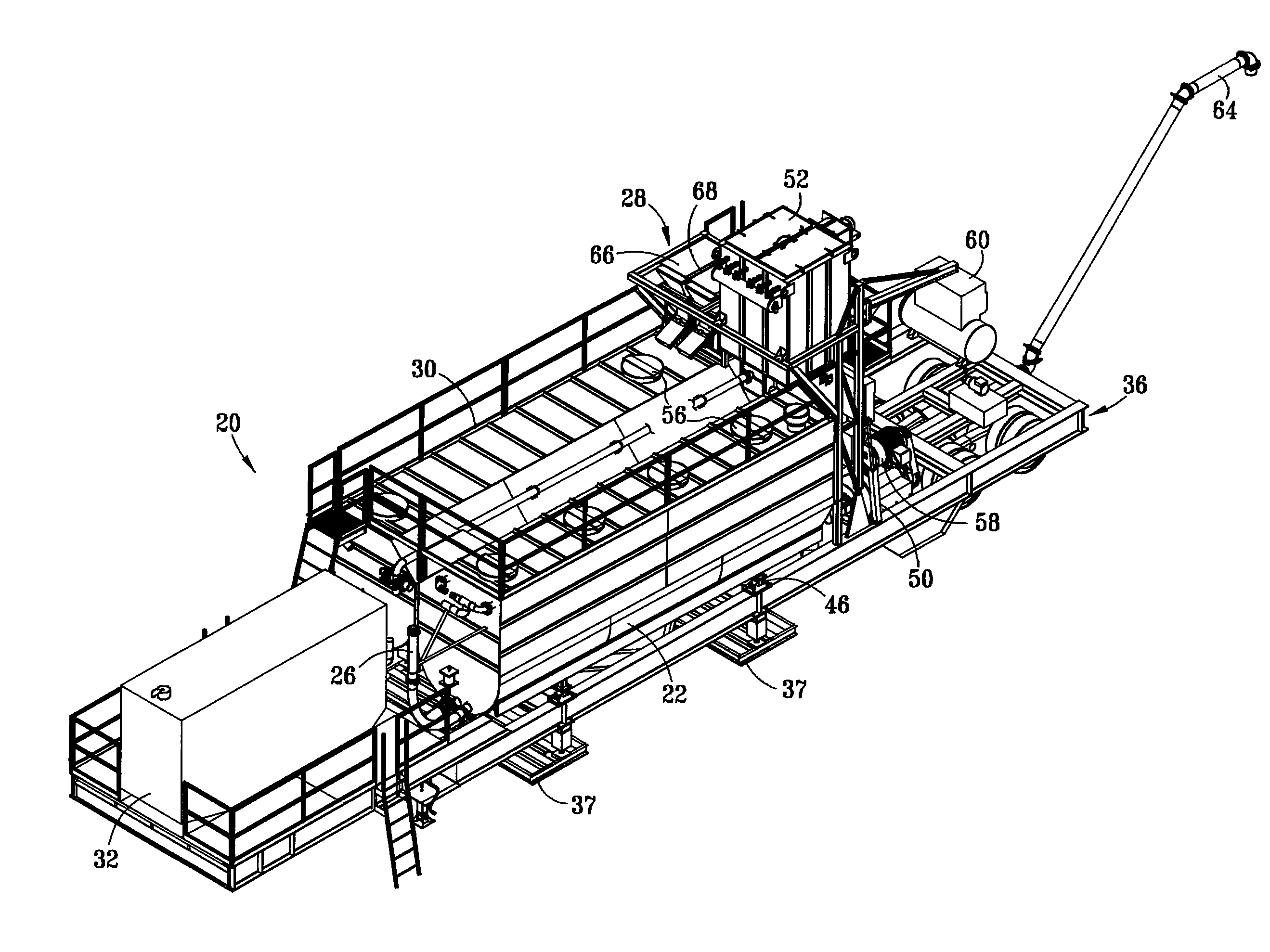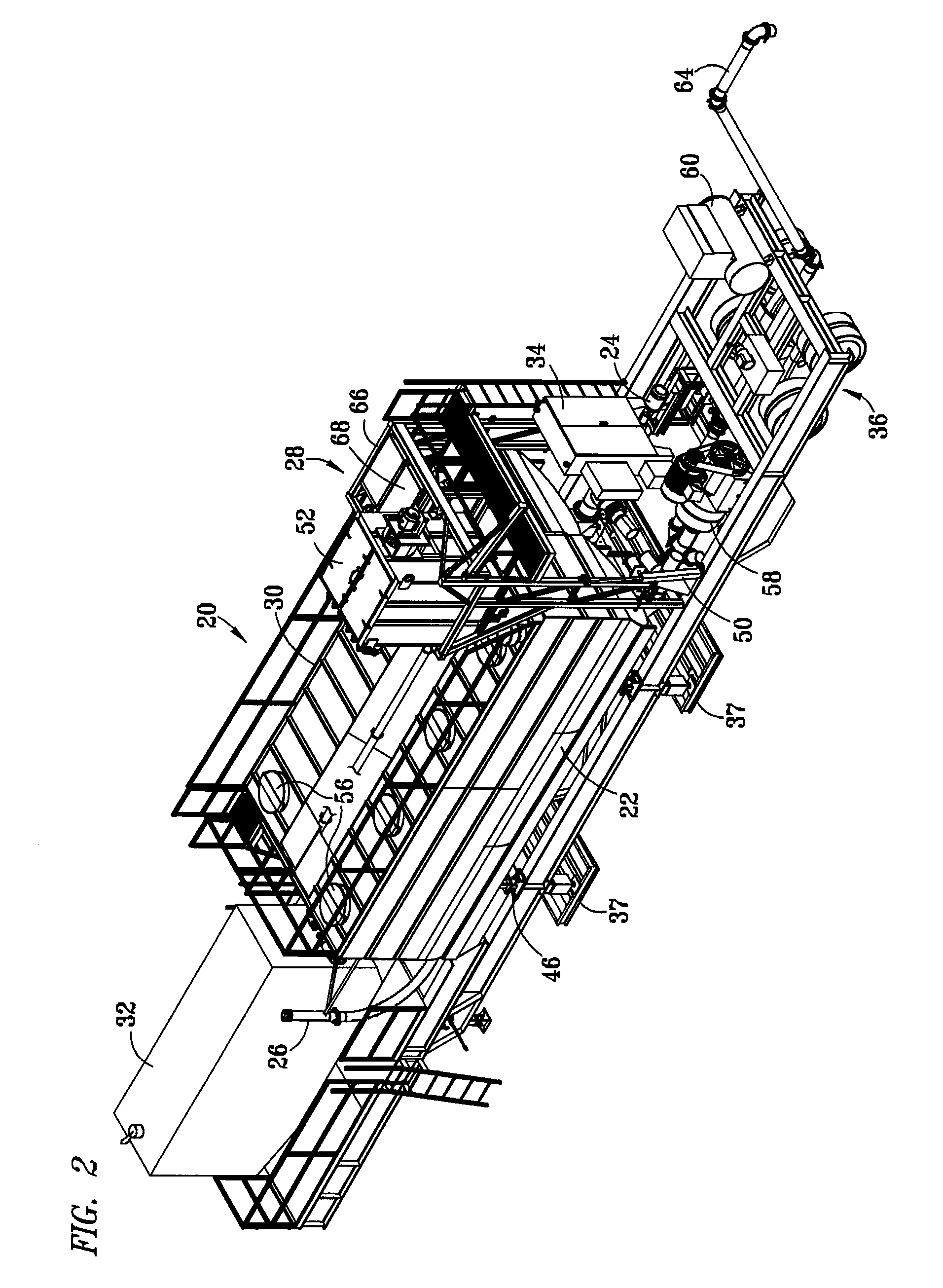Cement stabilization of soils using a proportional cement slurry
a technology of cement stabilization and slurry, applied in the field of cement, can solve the problems of slurry methods that have proved to be very problematic in use, process considered undesirable, and soil cement creation is especially undesirable, and achieves the effect of stable composition
- Summary
- Abstract
- Description
- Claims
- Application Information
AI Technical Summary
Benefits of technology
Problems solved by technology
Method used
Image
Examples
example 1
[0039]In a laboratory setting, slurry samples A-D were created by combining water, 1000-2500 grams of Portland cement, the specified cellulosic, and sucrose. For samples A-D, the Portland cement formed 45% by weight of the water cement mixture. Sucrose and cellulosic were also added in amounts measured relative to the weight of the cement that was used. Sucrose was added to the mixture to create 0.05 weight percent sucrose by weight of the cement. The amount of sucrose was determined in prior studies as the preferred amount to ensure the slurry remained workable for at least 8 hours.
[0040]The sugar and cellulosic were added to the water in a plastic bucket followed by the addition of the cement. The slurry was mixed in the plastic bucket using a Hamilton Beach Scovill “milk-shaker” mixer, which is commonly used in the preparation of plasticity index samples. The slurry batch was mixed for five minutes on the medium setting and the allowed to rest for ten minutes before the initial r...
example 2
[0043]Batches of slurry were created using the procedure identified in Example 1, except that the weight percent of Portland cement in the slurry was increased to 65%. Sample E, was a control that did not contain any cellulosic. Sample F contained 0.10 weight percent cellulosic MK 400 by weight of the cement. Sample G contained 0.15 weight percent cellulosic MK 400 by weight of the cement. Sample H contained 0.20 weight percent cellulosic MK 400 by weight of the cement. The results are shown below in Table 2.
[0044]
TABLE 2%SICPBWOC60030063200100PlasticYieldPlasticYieldSampleAdmixAgeRPMRPMRPMRPMRPMRPMviscosityPointviscosityPointEcontrol0:428555201545350.06253025control4:21145100302590700.09554555control7:09—7525206045————F0.10%0:4512080252060450.084040400.10%4:261751253530100750.107550750.10%7:08—7525206045————G0.15%0:4814085252070500.113055300.15%4:302351605040130950.158575850.15%8:07—752506045————H0.20%0:52185115302585600.144570450.20%4:342151404540115800.156575650.20%8:346955501601...
example 3
[0045]Batches of slurry were created using the procedure identified in Example 1, except that the weight percent of Portland cement in the slurry was increased to 67.5%. Sample I, was a control that did not contain any cellulosic. Sample J contained 0.10 weight percent cellulosic MK 400 by weight of the cement. Sample K contained 0.15 weight percent cellulosic MK 400 by weight of the cement. Sample L contained 0.20 weight percent cellulosic MK 400 by weight of the cement. The results are shown below in Table 3.
[0046]
TABLE 3%SICPBWOC60030063200100PlasticYieldPlasticYieldSampleAdmixAgeRPMRPMRPMRPMRPMRPMviscosityPointviscosityPointIcontrol0:5412080252065500.08404040control4:4026019055401601300.1412070120control7:05—752506045————J0.10%0:53190120302590650.145070500.10% 4:4432522555451801350.201251001250.10%6:58—752506045————K0.15%0:582401453530115750.195095500.15%4:4732522065551801350.211151051150.15%6:57—752506045————L0.20%1:032951804540140950.2365115650.20%4:5640026580652201650.2613013...
PUM
| Property | Measurement | Unit |
|---|---|---|
| weight percent | aaaaa | aaaaa |
| flow time | aaaaa | aaaaa |
| weight percent | aaaaa | aaaaa |
Abstract
Description
Claims
Application Information
 Login to View More
Login to View More - R&D
- Intellectual Property
- Life Sciences
- Materials
- Tech Scout
- Unparalleled Data Quality
- Higher Quality Content
- 60% Fewer Hallucinations
Browse by: Latest US Patents, China's latest patents, Technical Efficacy Thesaurus, Application Domain, Technology Topic, Popular Technical Reports.
© 2025 PatSnap. All rights reserved.Legal|Privacy policy|Modern Slavery Act Transparency Statement|Sitemap|About US| Contact US: help@patsnap.com



